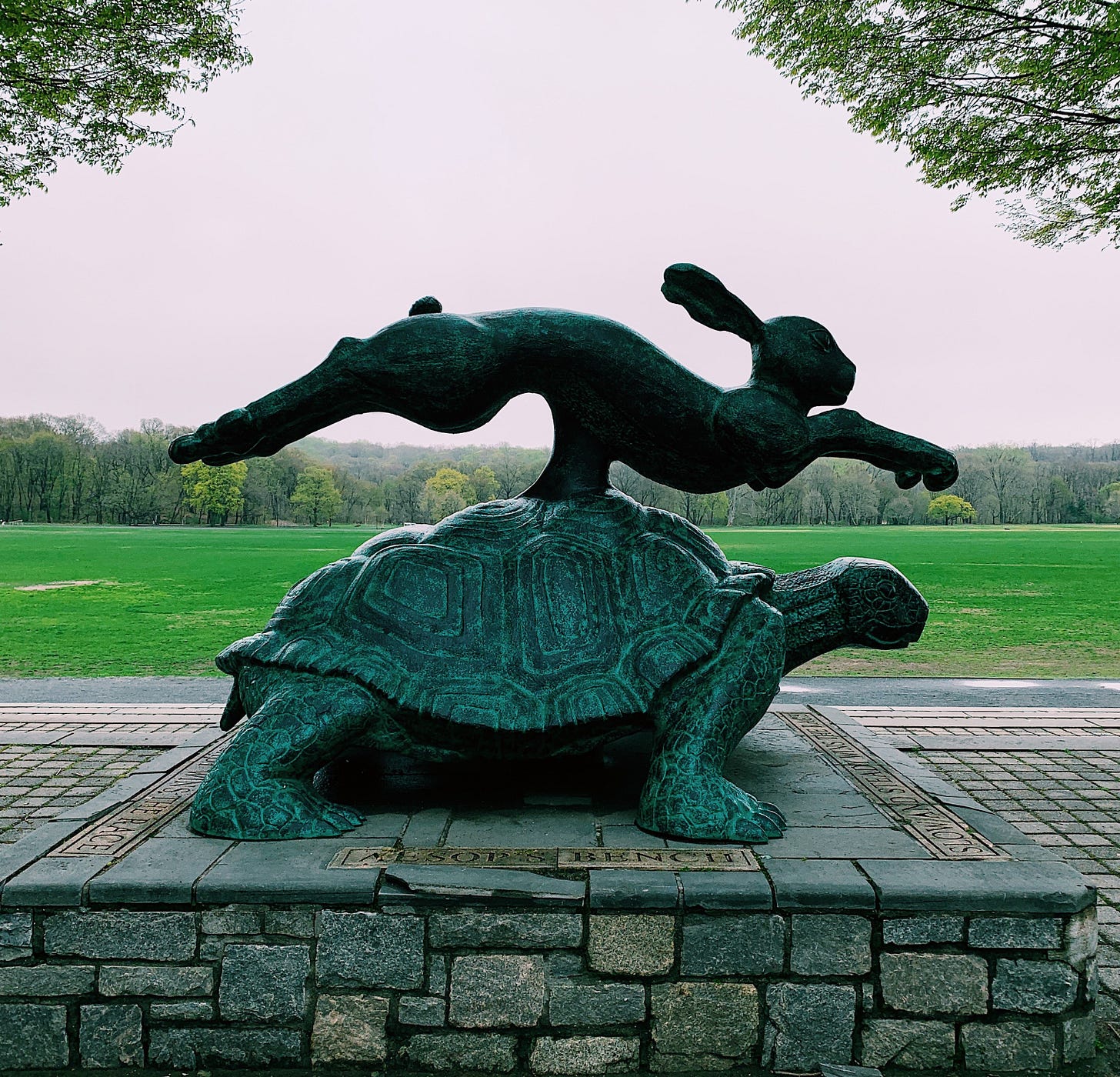Photo by Jon Tyson on Unsplash
“There are no second acts in American lives,” F. Scott Fitzgerald famously wrote. Of course, Fitzgerald only lived to be 44. Had he devoted less time to pickling his liver and managed instead to live into his 60s or 70s, he might have had a different opinion.
The great blessing in having longer lifespans, which many of us will enjoy, is that if you don’t succeed the first time around, you have enough time to try again. For those of us who are labeled “late bloomers,” this is a profound advantage.
We’ve all heard Aesop’s tale about the race between the tortoise and the hare, right? Fitzgerald was one of the hares, winning fame and fortune in his 20s. The hares still get a lot of press, whether they are writers, actors, athletes, business founders, or high-tech wizards. It’s part of our culture’s celebration of youth and beauty. But let us now praise famous tortoises.
Late Bloomers
The “late bloomer” tag is applied to those of us who fail to set the world on fire during normal business hours, which in our culture means before we turn 50. For a variety of reasons, some of us take longer to find what we were meant to do in life. Some of us don’t find it until we stop working.
In her memoir Thanks for Waiting – The Joy (and Weirdness) of Being a Late Bloomer, writer Doree Shafrir describes a life in which she seemed to do everything later than anyone else, including marrying at 38 and giving birth at 41. The joy of being a late bloomer, she writes, is having enough time to learn who you are and be happy and content with that.
Rich Karlgaard, publisher of Forbes and author of Late Bloomers: The Power of Patience in a World Obsessed with Early Achievement, says that despite the cultural obsession with youth, “neuroscience completely refutes the idea that the best chance for success is early.” He argues that we need to reinvent ourselves repeatedly over the course of our longer lives and “get used to the idea that we can bloom and rebloom and rebloom and rebloom.”
The neuroscience he cites has to do with intelligence. It is true that our “fluid intelligence” – the ability to reason quickly and solve problems - declines as we age. In fact, it starts declining in our 20s. But our “crystallized intelligence,” which is the accumulation of what we learn and experience, increases with age.
And by the way, the greatest rate of entrepreneurial activity isn’t among the young; it’s people between 55 and 64. According to an in-depth survey last year, the odds of entrepreneurial success actually increase each year until age 60.
An Ageist Appellation?
Some critics take issue with the late-bloomer label itself. “The ‘late’ in ‘late bloomer’ implies that there was an appropriate time for achievement (and that you are past it),” writes Sara Breindel, co-director of the anti-ageism campaign Changing the Narrative. “For most things, this is just not true.” The idea of late blooming “lies upon ageist assumptions that we are done achieving long before we are done living. It is time to discard this belief.” Karlgaard suggests the term “serial bloomers.” Similarly, social scientist Kendra Patterson suggests we replace the label with “repeat blooming,” because “we are all capable of being repeat bloomers.”
In my own case, not only am I a late bloomer, but I was late figuring out that I was. From the age of 10 I had set my course on becoming a newspaper reporter, and I maintained that steady focus through college and my first newspaper job. Knowing exactly what I wanted to do in life had certain advantages. Too bad what I knew was wrong. After only three years, I left the newspaper world to seek a better fit between my skills and my passions. And 45 years later, by golly, I found it! Thanks largely to a wife who kept me healthy enough to survive into my 70s. As a tortoise, I can testify that time is on my side.
Late does not mean never. It just means at your own speed.
Living longer presents us bonus opportunities to become the person we were meant to be. In contrast to the dominant narrative, life after working is not a one-way path of decline and deterioration. Consider these famous tortoises: Harland Sanders opened his first Kentucky Fried Chicken franchise when he was 62. Anna Mary Robertson Moses (a.k.a. Grandma Moses) first picked up a paintbrush at 78, and by the time she died at 101 she was a celebrated folk artist, with her work hanging in museums. Laura Ingalls Wilder started writing novels at 48, but her first best seller, Little House in the Big Woods, was published when she was 65.
Perhaps the highest and best use we can make of our additional years of life is to act on what brings us the greatest satisfaction and imbues our lives with purpose. As the author of Ecclesiastes says, “Whatever your hand finds to do, do it with all your might.”





I heard that this quote was attributed to a clergyman long ago. "The two most important days in your life are the day you are born, and the day you learn why." We need to live quite a while before we can determine the latter date. I was 64, and the timing was perfect.
Thanks for the inspiration. Don, the satisfaction and happiness with what you are doing at this stage of your life comes through loud and clear. I feel like I have bloomed a couple of times in my life and I am looking forward to blooming again. Why not?